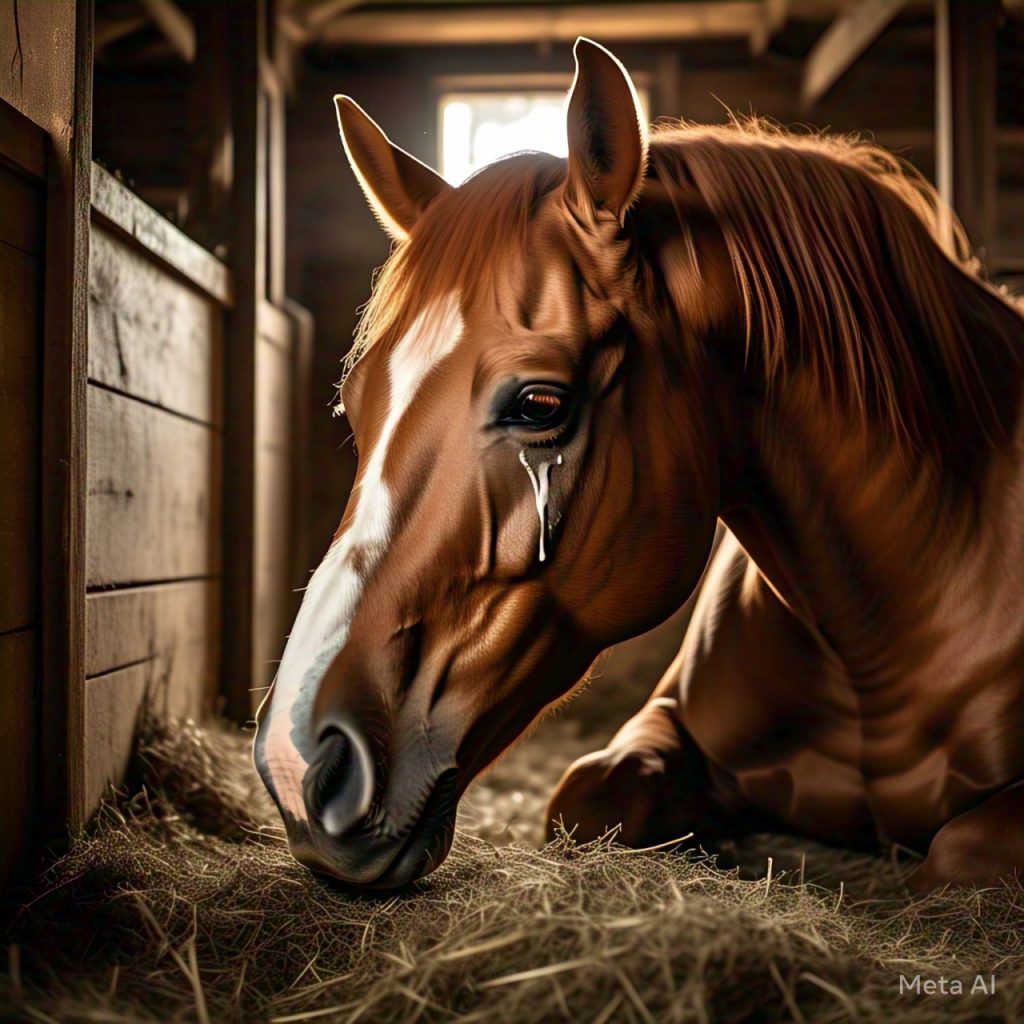Horses rely heavily on their eyesight, making eye health a crucial aspect of their overall well-being. If you notice white discharge coming from your horse’s eye, it could be a sign of an infection or other underlying issues. Understanding the causes, symptoms, and treatment options can help you take swift action to prevent complications.
What Causes White Discharge in a Horse’s Eye?
White discharge from a horse’s eye can be due to several conditions, ranging from mild irritation to serious infections. The most common causes include:
1. Conjunctivitis (Pink Eye)
Conjunctivitis is an inflammation of the conjunctiva, the membrane covering the white part of the eye and the inside of the eyelids. It can be caused by bacteria, viruses, allergens, or irritants such as dust and flies.
🔹 Symptoms:
- White or yellowish discharge
- Red or swollen eyelids
- Squinting or excessive tearing
- Rubbing the eye against objects
🔹 Treatment:
- Cleaning the eye with sterile saline
- Applying antibiotic eye drops or ointment
- Reducing exposure to dust, wind, and insects
2. Corneal Ulcers
A corneal ulcer occurs when the surface of the cornea is damaged, often due to trauma, foreign objects, or infections. These ulcers can lead to secondary bacterial infections, producing a white or cloudy discharge.
🔹 Symptoms:
- Cloudiness or a visible white spot on the eye
- Squinting or reluctance to open the eye
- Sensitivity to light
- Increased tearing
🔹 Treatment:
- Veterinary examination using fluorescein dye to detect ulcers
- Topical antibiotics to prevent infection
- Pain management with anti-inflammatory medications
- Avoiding steroid eye drops, as they can worsen infections
3. Blocked Nasolacrimal Duct
The nasolacrimal duct drains tears from the eye into the nose. If this duct becomes blocked, mucus or pus-like white discharge may accumulate around the eye.
🔹 Symptoms:
- Chronic tearing
- Thick, sticky discharge
- Swelling near the tear duct
🔹 Treatment:
- Flushing the duct with saline (performed by a veterinarian)
- Antibiotic eye drops if infection is present
4. Uveitis (Moon Blindness)
Equine recurrent uveitis (ERU), also known as moon blindness, is an autoimmune condition causing recurrent eye inflammation. White or cloudy discharge may appear during flare-ups.
🔹 Symptoms:
- Eye cloudiness or blue haze
- Squinting and sensitivity to light
- White or yellow discharge
- Recurring flare-ups over time
🔹 Treatment:
- Corticosteroid eye drops (under vet supervision)
- NSAIDs (non-steroidal anti-inflammatory drugs) to reduce inflammation
- Long-term management with immune-modulating drugs
5. Bacterial or Fungal Eye Infections
Bacterial and fungal infections can cause thick white or yellow discharge, especially if left untreated. These infections often result from injuries or prolonged exposure to moisture and poor hygiene.
🔹 Symptoms:
- Pus-like discharge
- Redness and swelling
- Cloudiness or white film over the eye
🔹 Treatment:
- Antibiotic or antifungal eye drops
- Regular eye cleaning
- Anti-inflammatory medications to relieve pain
How to Diagnose an Eye Infection in Horses
Since many conditions share similar symptoms, a veterinarian may perform several diagnostic tests, including:
✔️ Fluorescein staining – to check for corneal ulcers
✔️ Tear production tests – to detect dry eye issues
✔️ Bacterial/fungal cultures – to identify infections
✔️ Ophthalmic examination – to assess deeper eye structures
Preventing Horse Eye Infections
Prevention is key to maintaining healthy eyes in horses. Here are some essential tips:
✅ Keep the environment clean – Reduce dust, mold, and manure buildup.
✅ Use fly masks – Protect against insects that spread bacteria.
✅ Regular eye checks – Look for early signs of irritation.
✅ Avoid chemical irritants – Use horse-safe shampoos and sprays.
✅ Quarantine new horses – Prevent contagious infections from spreading.
When to Call a Veterinarian
Seek veterinary attention if you notice:
⚠️ Persistent white or yellow discharge
⚠️ Swelling, redness, or cloudiness
⚠️ Squinting or reluctance to open the eye
⚠️ Worsening symptoms despite treatment
Final Thoughts
White discharge in a horse’s eye can indicate a range of conditions, from minor irritation to serious infections. Early detection and prompt treatment are crucial to preventing long-term damage. If your horse shows signs of discomfort, consult a veterinarian to determine the underlying cause and start appropriate treatment.
By maintaining good stable hygiene, protecting your horse from irritants, and acting quickly at the first sign of trouble, you can help ensure your horse’s eyes stay healthy and infection-free.

